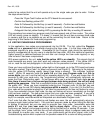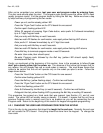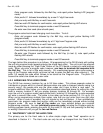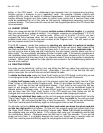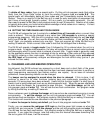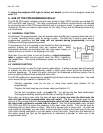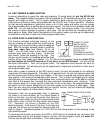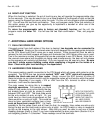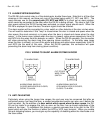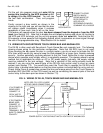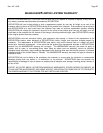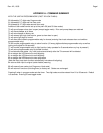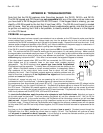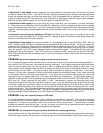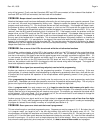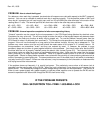
Rev. A.2, 10/03 Page-20
7.3 ALARM SYSTEM SHUNTING
The DK-26's lock control relay is of the double pole, double throw type. Note that in all the other
drawings in this manual, we show only one of the poles being used (C1, NC1 and NO1). The
most common use for the second pole (C2, NC2 and NO2) is to shunt out an alarm system,
which would be connected to the door when the DK-26 is being utilized. The idea is that if the
door opens without the DK-26 having been activated, an alarm signal should result. When the
DK-26 is employed to open the door, the alarm signal should be shunted.
The alarm system will be connected to a door switch or other detector at the door via two wires.
You will need to determine if this “loop” is closed when the door is closed and opens when the
door opens (the most common) or is open when the door is closed and closes when the door
opens. In the former case (closed when the door is closed), splice wires respectively from C2
and NO2 into the wires from the detector or switch. When the DK-26 operates, this connection
will close preventing the alarm loop from opening (alarm condition). In the latter case (open
when the door is closed), cut one of the alarm loop wires and splice wires respectively from C2
and NC2 into the ends of this wire. When the DK-26 operates, this connection will open
preventing the alarm loop from closing (alarm condition).
FIG 8 WIRING TO SHUNT ALARM SYSTEM ON DOOR
NC2 C2
NO2
DOOR
SWITCH
NC2 C2
NO2
DOOR
SWITCH
ALARM SIGNAL WHICH IS
CLOSED WHEN DOOR IS CLOSED;
OPENS TO ALARM
ALARM SIGNAL WHICH IS
OPEN WHEN DOOR IS CLOSED;
CLOSES TO ALARM
CUT EITHER
WIRE FROM
SWITCH
TO ALARM PANEL TO ALARM PANEL
7.4 ANTI-TAILGATING
Particularly when using the longer time ranges, the end user may be concerned that after an
authorized person has used the door, a second unauthorized person can also use it before the
lock has reset. By the addition of a door switch which opens when the door opens, the DK-
26 can be made to re-engage the lock as soon as the door has re-closed regardless of the
status of the timer. To implement this feature, a special command has to be sent to the CPU
board which will alter the function of either the HCD or UCD input terminal. When you enable
this anti-tailgating feature, you must give up the capability of disabling either the Hard code or all
the User codes.



